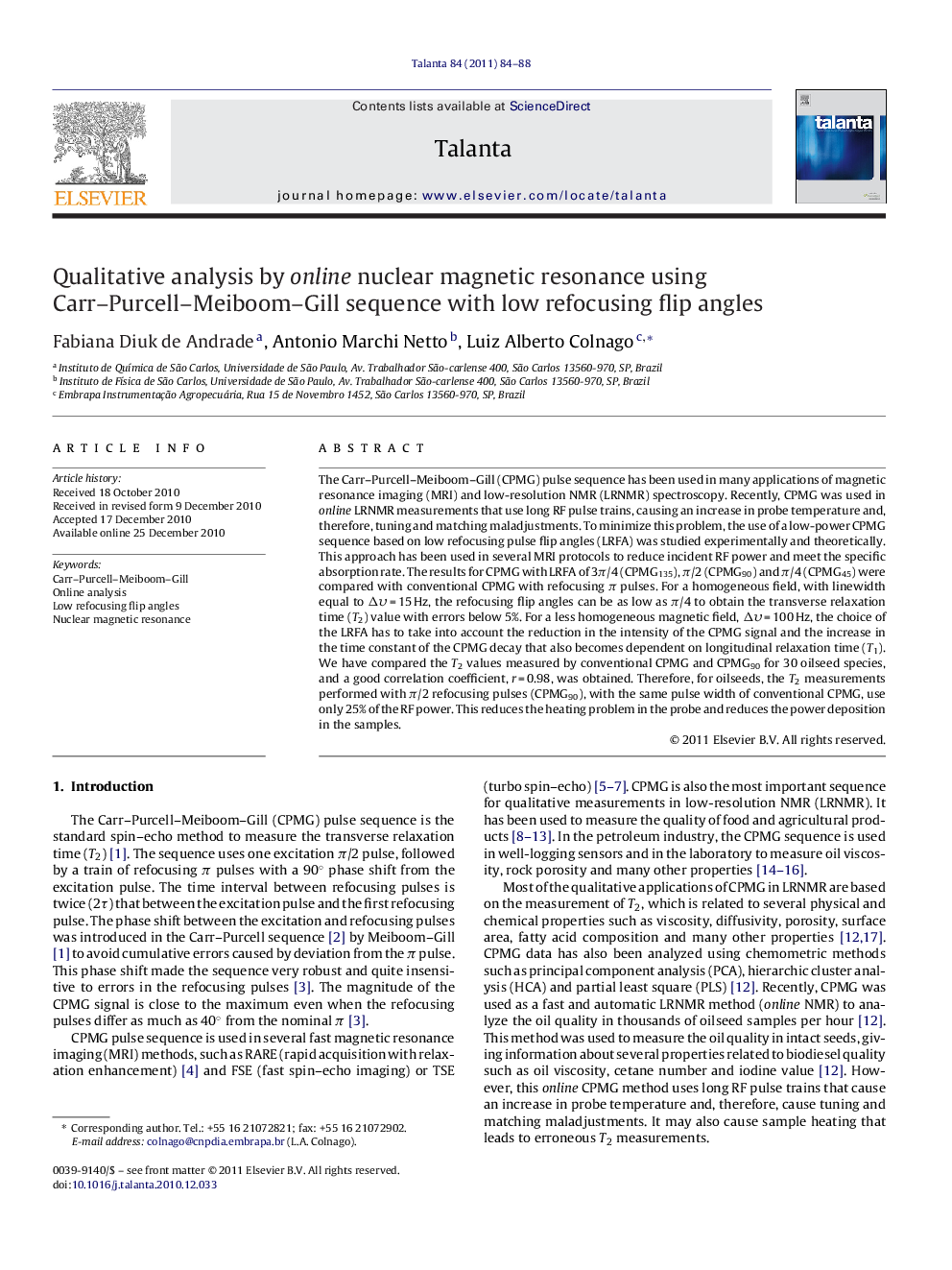| Article ID | Journal | Published Year | Pages | File Type |
|---|---|---|---|---|
| 1242516 | Talanta | 2011 | 5 Pages |
The Carr–Purcell–Meiboom–Gill (CPMG) pulse sequence has been used in many applications of magnetic resonance imaging (MRI) and low-resolution NMR (LRNMR) spectroscopy. Recently, CPMG was used in online LRNMR measurements that use long RF pulse trains, causing an increase in probe temperature and, therefore, tuning and matching maladjustments. To minimize this problem, the use of a low-power CPMG sequence based on low refocusing pulse flip angles (LRFA) was studied experimentally and theoretically. This approach has been used in several MRI protocols to reduce incident RF power and meet the specific absorption rate. The results for CPMG with LRFA of 3π/4 (CPMG135), π/2 (CPMG90) and π/4 (CPMG45) were compared with conventional CPMG with refocusing π pulses. For a homogeneous field, with linewidth equal to Δυ = 15 Hz, the refocusing flip angles can be as low as π/4 to obtain the transverse relaxation time (T2) value with errors below 5%. For a less homogeneous magnetic field, Δυ = 100 Hz, the choice of the LRFA has to take into account the reduction in the intensity of the CPMG signal and the increase in the time constant of the CPMG decay that also becomes dependent on longitudinal relaxation time (T1). We have compared the T2 values measured by conventional CPMG and CPMG90 for 30 oilseed species, and a good correlation coefficient, r = 0.98, was obtained. Therefore, for oilseeds, the T2 measurements performed with π/2 refocusing pulses (CPMG90), with the same pulse width of conventional CPMG, use only 25% of the RF power. This reduces the heating problem in the probe and reduces the power deposition in the samples.
